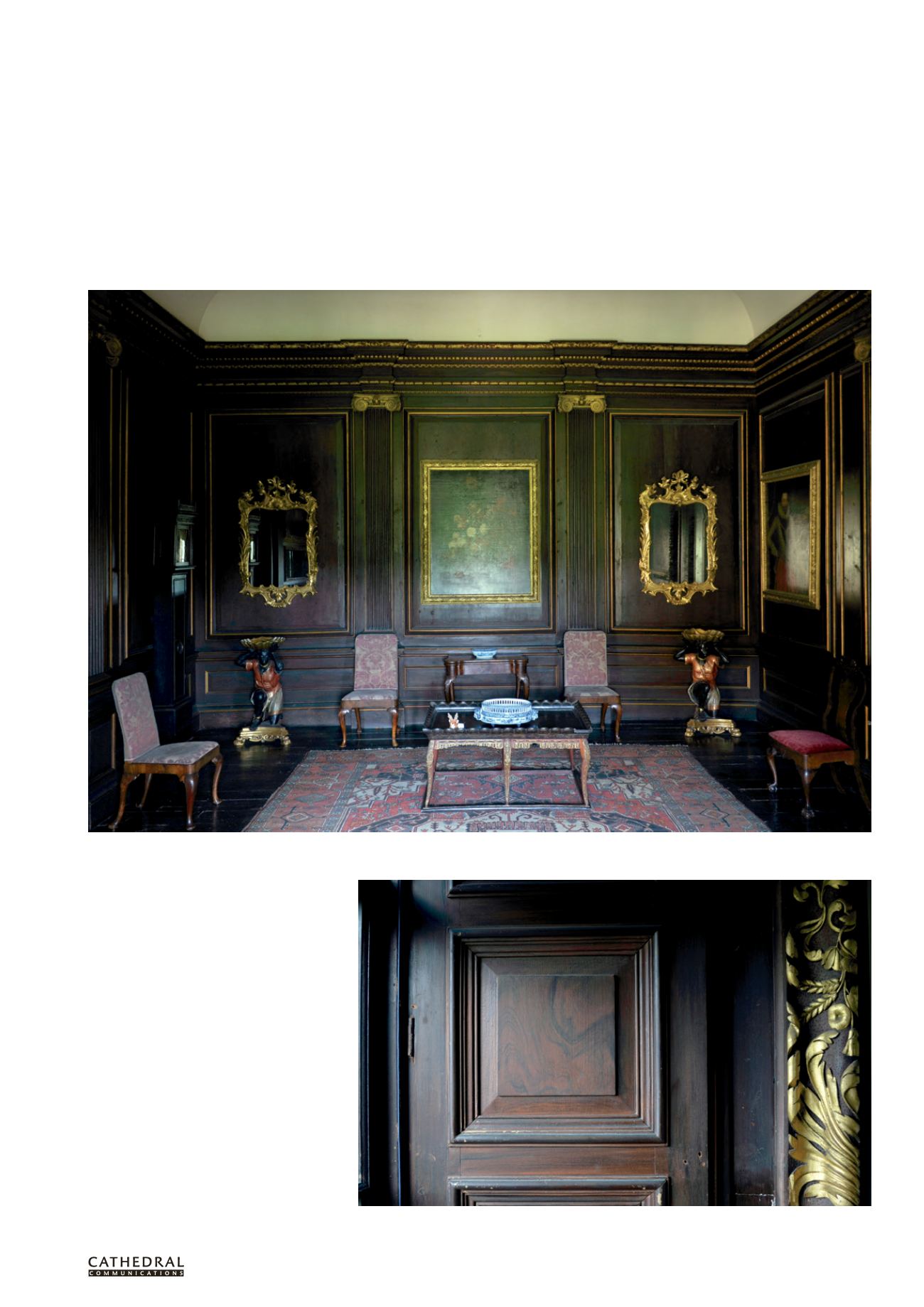
T W E N T Y F I R S T E D I T I O N
T H E B U I L D I N G C O N S E R VAT I O N D I R E C T O R Y 2 0 1 4
1 6 1
INTERIORS
5
IMITATION TIMBER GRAINING IN
THE 18th and 19th CENTURIES
LISA OESTREICHER
T
ODAY WE
are accustomed to seeing
architectural joinery painted a plain
colour, often white. However, this has
not always been so. When investigating
the layers of paint which accumulate in
historic buildings over the centuries, the
architectural paint researcher becomes
accustomed to identifying the build-up of
coloured opaque, translucent and varnish
layers which are the tell-tale signs of the
presence of graining. This form of decoration
was often used to make common timber
such as deal look like more expensive wood.
It is found in buildings of many styles and
periods, from the modest to the grand, and
its use within a room can range from one or
two timber features to covering all the visible
joinery from the glazing bars of the windows
to the wainscoting and skirting boards.
From the examples found and from
contemporary accounts, it is clear that
The Balcony Room at Dyrham Park near Bath, and (below) a detail of the walnut graining scheme on one of the shutters. Paint research revealed that this was the room’s
second decoration scheme and was probably applied in the early 18th century.


